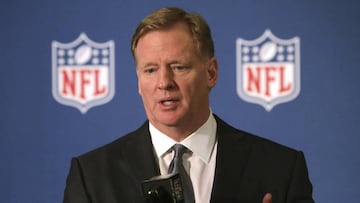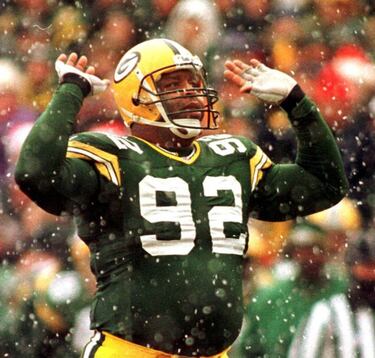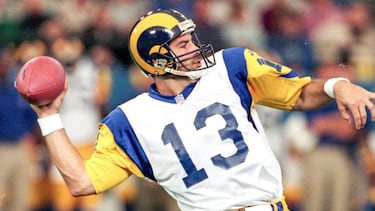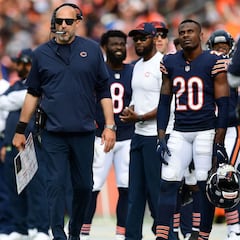How does the NFL free agent signings procedure work?
Is your team looking for a quarterback, tight end or receiver? From the window to salary caps and holdouts, we dive into the ins and out of NFL free agency.

The NFL fan and casual viewers will have noticed that in the spring of every year, their favourite news media outlet will be flooded with talk of free agency, from the window to salary caps and holdouts. Each team jockeys for position, hoovering up the available stars and releasing some worthy stalwarts to make way on the roster. Discussion of this American sporting phenomenon often assumes prior knowledge but how often do we stop to consider what free agency means and just how feudal the NFL player contract system really is?
Imagine your own job. You might be a plumber, or a baker, or you drive a taxi, or maybe you work on a construction site. For the vast majority of us, we are the master of our own destiny to some extent. If an employee of Walmart hears that Target is paying $2 more per hour for the same job, there is nothing to stop them from applying for the job and accepting it if offered. We may have to give a notice period or sacrifice a few weeks’ pay. But that is hardly punitive. Likewise, if the manager of Olive Garden notices an outstanding waitress working at Applebee’s, then there is no reason why he shouldn’t offer her a job at his restaurant on the spot. It is a free country right? And free enterprise is the backbone of our way of life. Not so in the NFL.
NFL Franchise model dictates free agency
When looking at the finances and contracts of the NFL, it is worth remembering that the league is built on a franchise model, where the owners of the teams are required to work within a tight framework set out in the NFL rulebook. The brand is vigorously defended and players, coaches, and even owners have been sacrificed to keep that brand on track.
Just paid a visit to the Ralph Hay Showroom, where the first league meeting took place 100 years ago today. pic.twitter.com/V8NiXSjd0e
— Roger Goodell (@nflcommish) September 17, 2020
Prior to the Reggie White case of 1993, the movement of one professional player between teams was the exception, measured not in players per year but in individuals per decade. Indeed, prior to the second world war’s depletion of the available pool of players, it was strictly forbidden.
The current system, while still more restrictive than almost any other non-military job market in the world, is the most free that player agency has ever been. While certainly less than perfect, it does provide a broad level of mobility for players and teams to look for greener pastures.

Under the Reggie White Settlement, the NFL created four types of free agency. The first of these, the Undrafted Free Agent is a player who was not chosen in the draft by any team, and who is subsequently a Free Agent who may negotiate and sign with any team. The second, the Exclusive Rights Free Agent is a player who has fewer than three seasons and an expired contract is not allowed to negotiate with any other team if their original team offers them a league minimum contract.

Let’s imagine a player who was undrafted out of college and signed a one-year deal as a backup linebacker with, say, Dallas for the league minimum, for a rookie player being $660k. Let’s also imagine that the linebacker corp is depleted by injury in the first four weeks and our player gets the starting role. Even if he becomes the bedrock of the top NFL defense, even if the Cowboys win the Super Bowl (I know, but just go along with me here), at the end of the season our man would have only one year in the NFL and no contract. Dallas could offer him one more year at the minimum and he would either have to accept it or not play. He would be forbidden to speak to any other team.
The third type of free agent is a Restricted Free Agent. This is a player who has completed three seasons in the NFL and an expired contract. There are certain restrictions available to be placed on the player, which would allow them to shop around and find out their true market value, but give the original team the right to match any offer or be compensated with a first round draft pick if they choose not to. At the end of 2020, the Saints all-around phenom Taysom Hill had his shiny new four year, $140 million contract renegotiated in this fashion.
The Unrestricted Free Agent is a player who has more than four years under their belt and is outside of their contract. They are free to treat with anyone without restrictions. They have, in the eyes of the NFL, paid their dues and earned the right to be treated as professionals. Exactly as to why they needed to have four years in this gruelling and dangerous job before earning the right to negotiate their own working conditions is a far deeper philosophical discussion.
Tom Brady says he can’t believe teams passed on signing him when he was a free agent: “I think it’d be a no-brainer if you said, ‘Hey, you’ve got a chance to get Wayne Gretzky on your team, or you got a chance to have Michael Jordan on your team.’“
— Ari Meirov (@MySportsUpdate) July 22, 2021
pic.twitter.com/VaKsqN3mHU
Creating a level playing field
It would be folly to imagine that all of the restrictions are solely on the comportment of the players, with no responsibility shouldered by the teams themselves. All of this system, in an almost un-American fashion, limits the choice of the players to be compensated for the extreme risk that they take each time they snap on a chinstrap, is primarily designed to level the playing field between the wealthier market teams and the smaller ones. The draft system is designed to have the bottom of the league table choosing first and the Super Bowl winners last in support of this same premise. The league’s free agency restrictions may have an effect on the players, but were written, much like the salary-cap rule, with the owners in mind.
Of course I am. But it fascinates me that the NFL ruling class, unlike the centre left, understand the importance of huge marginal tax rates for the rich (i.e. salary caps) and of the need to redistribute wealth (i.e. transfer good players to teams that can't afford them)? https://t.co/1xF6vO0wkw
— Yanis Varoufakis (@yanisvaroufakis) September 30, 2021
Related stories
There are short windows of the year during which different types of free agent must be signed, but the general idea is that by training camp for the majority of players, and certainly by the end of week 10 in the case of franchise players or transition players, all deals must be completed. Both the free agency window and the salary cap work to prevent a large-market team with deep pockets from waiting until just before the playoffs and bringing in a ringer to push them on to the Super Bowl.
The free agency system may penalize both players and organizations but the penalty is weighted heavily against the individual. The loss of a draft pick to a billionaire owner is nothing, relatively speaking. The loss of a season’s income at worst or even a hefty fine will hit an individual player much harder. Setting aside the big-money contracts so beloved by headline writers, the average salary in the NFL is $860k. Being heavily skewed by the top percentile of salaries, this means that over 50%, perhaps as high as 75% of the players on your television screen every week are being paid below this amount. No it is not a bad amount of money, and they are definitely not poverty-stricken, but when you factor in a 3% agent’s fee plus the 40-50% tax they must pay, it is certainly not the type of money that can withstand the financial penalties levied upon them. And as the saying goes, if the penalty to any infraction is a fine, then that rule only exists for the poor.

